View Other Topics.
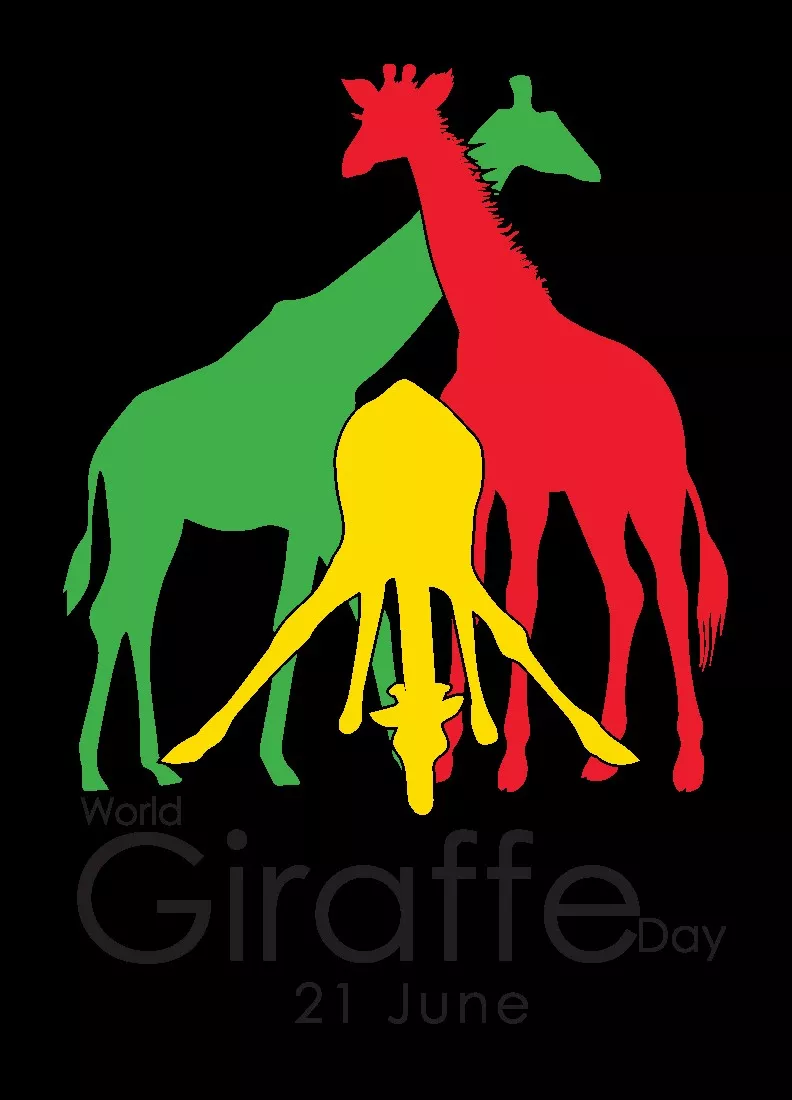 Jun 21, 2018
Jun 21, 2018
How Many Species of Giraffe Are There?
What do we know about giraffe? This article by Pierce Nahigyan from planetexperts.com says, they’re the world’s tallest mammal, they’re mostly yellowish, and their tongues are long, blue and can grab leaves off of branches. You might be thinking a giraffe is a giraffe is a giraffe, but in fact, there are nine different kinds of giraffe on the African continent––and each of them has its own distinctive coat pattern!
.jpg)
Image via Zoo News Digest. (Image Credit: International Hoofstock Awareness Association)
Yet despite this spectrum of creative camouflage, determining what makes one animal a separate species is more complicated than just how it looks. With elephants, for example, two species are technically recognized: the African and Asian varieties. However, there are some who believe the African bush elephant (Loxodonta africana) and the African forest elephant (L. cyclotis) are different enough to merit their own classifications.
Most scientists recognize nine different kinds of giraffe, but whether they merit classification as their own individual species or are merely subspecies is still up for debate. In my interview with Dr. Julian Fennessy, founder of the Giraffe Conservation Foundation and co-chair of the IUCN Giraffe and Okapi Specialist Group, the doctor was definitive on the subject:
“We currently recognize one species and nine subspecies,” he said.
Those nine subspecies are:
• The Nubian Giraffe (Giraffa camelopardalis)
• The West African Giraffe (G. c. peralta)
• The Kordofan Giraffe (G. c. antiquorum)
• The South African Giraffe (G. c. giraffa)
• The Angolan (or Smoky) Giraffe (G. c. angolensis)
• The Masai (or Kilimanjaro) Giraffe (G. c. tippelskirchi)
• The Thornicroft’s (or Rhodesian) Giraffe (G. c. thornicrofti)
• The Rothschild’s (or Ugandan) Giraffe (G. c. rothschildi)
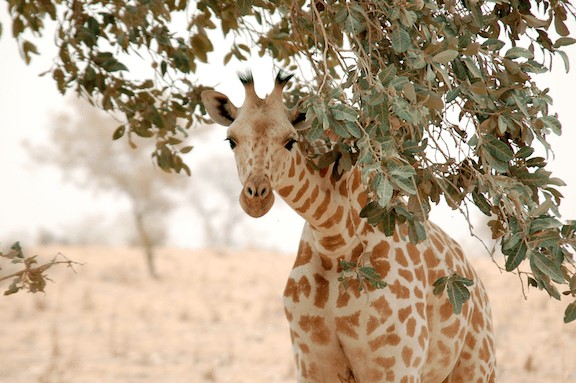
Image: A West African Giraffe, Koure, Niger. (Image Credit: Roland H. / Flickr)
When I asked why there seems to be such spirited debate over the species/subspecies issue, Dr. Fennessy replied, “I think because it keeps a lot of people in business.”
Historically, if two animals could breed and produce a viable offspring, that was considered a species. Now, says Dr. Fennessy, there are at least 30 different species concepts, many of which rely on genetic testing.
“With respect to giraffe in general, there are some clever people out there who’ve come up with ideas about why they’re a species or subspecies,” he continued. “We ourselves [the GCF] have been doing a lot of genetics work across the continent and now have samples from almost every single major population of giraffe in Africa. […] We’ve already shown that some of the giraffe, because they split on the ecological timeline a million and a half to two million years ago, some geneticists and some taxonomists feel that this is definitely a species-level separation, not just a subspecies.”
Yet according to GCF, the Thornicroft’s giraffe found in Zambia and the Masai giraffe in Kenya and Tanzania “are actually genetically the same.”
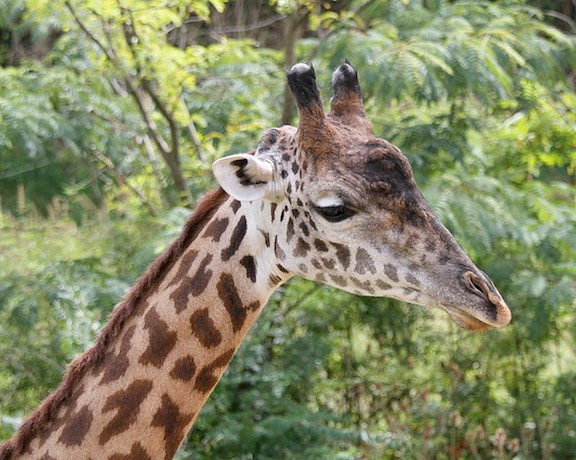
Image: Masai giraffe in the Cincinnati Zoo and Botanical Garden. (Image Credit: Greg Hume)
In the end, Dr. Fennessy believes that the species/subspecies debate over giraffe “often becomes arbitrary, in all honesty…but it’s very important politically and economically.”
For example, if a subspecies is elevated to a species, it can then be listed on the IUCN Red List in one of its threatened categories, offering it access to funding sources that it may not have had before.
To learn more about giraffe, you can visit the Giraffe Conservation Foundation website.
7 Fun Facts About Giraffe
It’s the tallest animal on Earth, it sleeps only two hours per day and its prehensile tongue is dark – often blue or black – to prevent it from getting sunburned (also, that tongue averages about 20 inches long).
Today is World Giraffe Day, a celebration of this curious but captivating giant in the hopes of spreading awareness about its plight. Presently, there are less than 80,000 giraffe left in the wild, less than 10 percent of their numbers at the turn of the 20th century. To learn more about efforts to save the giraffe in Africa, check out Planet Experts’ exclusive interview with Dr. Julian Fennessy of the Giraffe Conservation Foundation.
In the meantime, Planet Experts has prepared seven fun facts about giraffe that you can share across social media and help us promote World Giraffe Day 2015!
1) The Species Name Literally Means “Camel Leopard”
The scientific classification for the giraffe is technically Giraffa camelopardalis. The first part comes from the Arabic word zarafa, which can be translated to “fast walker” (giraffe are so tall that they stroll at a brisk 10 mph). The species name, camelopard, derives from the Greek terms for camel and leopard. The giraffe has the long neck and sass of a camel, but the iconic spots of a leopard (which may also be a sassy beast, but we’ve never gotten close enough to tell).
2) A Giraffe’s Neck Is Too Short to Reach the Ground
With the longest neck in the animal kingdom, you’d think the giraffe would have no problem finding some refreshment. In fact, its long neck and legs are the reason why getting a drink of water can be a little…awkward.
Giraffe in the deserts of Namibia actually get most of their hydration from condensation and coastal fog that collects on the leaves they eat.
3) Giraffe Anatomy Inspired NASA Engineers
A giraffe’s heart weighs approximately 11 kilograms – the heaviest of any land mammal – and for good reason. Pumping blood all over a giraffe’s body (which can reach up to 20 feet tall) requires substantial power, and just a bit of finesse. According to the GCF, in order to protect a giraffe’s brain from getting overloaded with blood when it lowers its head to drink, its circulatory system has valves that stop the back-flow of blood as well as “elastic-walled vessels that dilate and constrict to manage flow.” The blood vessels in giraffe legs served as inspiration for the design of NASA space suits.
4) Giraffe Use Their Spots to Regulate Their Body Heat
There are nine subspecies of giraffe and nine distinct coat patterns (more on that below), but each subspecies uses its coat in the same way: To blend in and to regulate their body heat. According to GCF, “Giraffe’s patches are first and foremost for camouflage. But underneath each patch lies a very sophisticated system of blood vessels
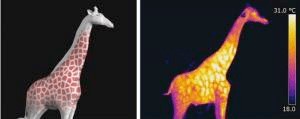
The image shows the intensity of heat radiation in a giraffe’s patch pattern. (Image Credit: GCF)
When a giraffe gets hot, it can pump its blood into the middle of a patch, which “acts as a thermal window to release body heat.”
5) Giraffe Spots Are Like Human Fingerprints
6) Giraffe Eat Bones
Yep.
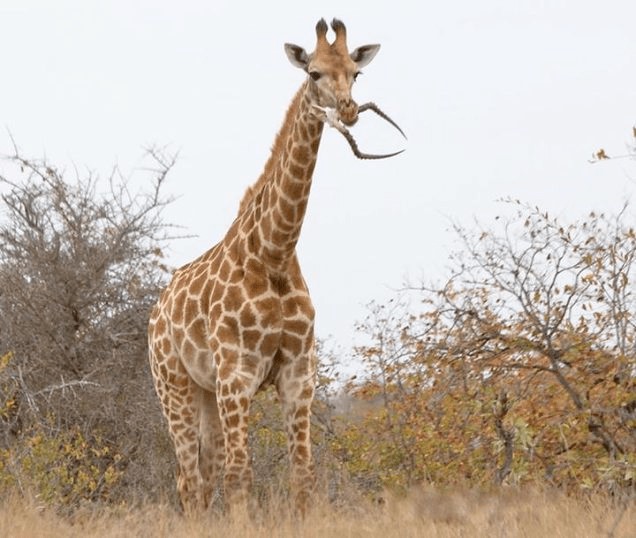
Image: A giraffe munching on an impala skull. (Photo Credit: Rene van der Schyff Wildlife Photography)
It’s referred to as osteophagia, which means “bone eating,” though giraffe do not actually eat the whole bone. Rather, they gnaw on it for a bit. It’s unknown exactly why giraffe do this, though it’s believed chewing on bones supplements their diet with calcium and phosphorous, two critical minerals for healthy bones.
“It happens here in Namibia quite a bit,” Dr. Fennessy told Planet Experts. “You can see them with huge bones, in and out of their mouth, up and down the throat. It’s quite remarkable to watch.”
7) Giraffe Sometimes Use Their Butts as Pillows
Giraffe are very big and the African wilderness can be very dangerous. In other words, when giraffe lie down or stand up, it takes a lot longer than it does for your average yoga student, leaving them vulnerable to attack. This may be why giraffe have evolved to be some of the most efficient sleepers in the animal kingdom, catching their shut-eye in five minute increments and rarely sleeping longer than two hours per day.
On those rare occasions that they do sit down, they will sometimes use their butts as pillows. It’s pretty damn cute.
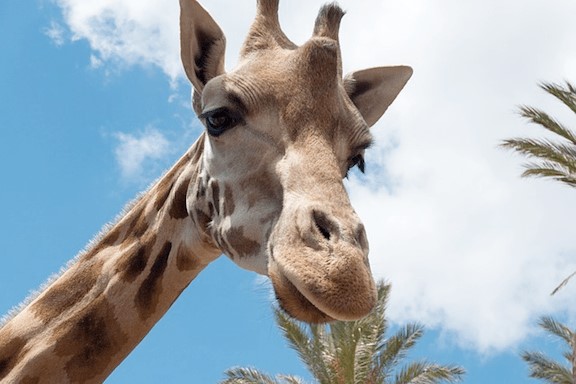
Image: The giraffe’s smile. (Image Credit: Pixabay)
Visit the Giraffe Conservation Foundation to learn more giraffe facts and how you can help protect this amazing animal from being lost forever. https://www.worldgiraffefoundation.org
*** A note from Natalie:
Adopt a giraffe..........I did !!!!!
~~~~~~~~~~~~~
I want to thank my adminstrative assistant StarzJC for gathering all this information on my beloved animal.
Also the World Giraffe Foundation...........we love you !!!!!
Thank you Jacquie
Tags:
#world#giraffe#day,#june#21,#natalie's#favorite#animal,#love,#world,#starzpsychics.com,#starz#advisors
World Giraffe Day.............Yayyyyy !!!!! Love, Natalie.

How Many Species of Giraffe Are There?
What do we know about giraffe? This article by Pierce Nahigyan from planetexperts.com says, they’re the world’s tallest mammal, they’re mostly yellowish, and their tongues are long, blue and can grab leaves off of branches. You might be thinking a giraffe is a giraffe is a giraffe, but in fact, there are nine different kinds of giraffe on the African continent––and each of them has its own distinctive coat pattern!
.jpg)
Image via Zoo News Digest. (Image Credit: International Hoofstock Awareness Association)
Yet despite this spectrum of creative camouflage, determining what makes one animal a separate species is more complicated than just how it looks. With elephants, for example, two species are technically recognized: the African and Asian varieties. However, there are some who believe the African bush elephant (Loxodonta africana) and the African forest elephant (L. cyclotis) are different enough to merit their own classifications.
Most scientists recognize nine different kinds of giraffe, but whether they merit classification as their own individual species or are merely subspecies is still up for debate. In my interview with Dr. Julian Fennessy, founder of the Giraffe Conservation Foundation and co-chair of the IUCN Giraffe and Okapi Specialist Group, the doctor was definitive on the subject:
“We currently recognize one species and nine subspecies,” he said.
Those nine subspecies are:
• The Nubian Giraffe (Giraffa camelopardalis)
• The West African Giraffe (G. c. peralta)
• The Kordofan Giraffe (G. c. antiquorum)
• The South African Giraffe (G. c. giraffa)
• The Angolan (or Smoky) Giraffe (G. c. angolensis)
• The Masai (or Kilimanjaro) Giraffe (G. c. tippelskirchi)
• The Thornicroft’s (or Rhodesian) Giraffe (G. c. thornicrofti)
• The Rothschild’s (or Ugandan) Giraffe (G. c. rothschildi)

Image: A West African Giraffe, Koure, Niger. (Image Credit: Roland H. / Flickr)
When I asked why there seems to be such spirited debate over the species/subspecies issue, Dr. Fennessy replied, “I think because it keeps a lot of people in business.”
Historically, if two animals could breed and produce a viable offspring, that was considered a species. Now, says Dr. Fennessy, there are at least 30 different species concepts, many of which rely on genetic testing.
“With respect to giraffe in general, there are some clever people out there who’ve come up with ideas about why they’re a species or subspecies,” he continued. “We ourselves [the GCF] have been doing a lot of genetics work across the continent and now have samples from almost every single major population of giraffe in Africa. […] We’ve already shown that some of the giraffe, because they split on the ecological timeline a million and a half to two million years ago, some geneticists and some taxonomists feel that this is definitely a species-level separation, not just a subspecies.”
Yet according to GCF, the Thornicroft’s giraffe found in Zambia and the Masai giraffe in Kenya and Tanzania “are actually genetically the same.”

Image: Masai giraffe in the Cincinnati Zoo and Botanical Garden. (Image Credit: Greg Hume)
In the end, Dr. Fennessy believes that the species/subspecies debate over giraffe “often becomes arbitrary, in all honesty…but it’s very important politically and economically.”
For example, if a subspecies is elevated to a species, it can then be listed on the IUCN Red List in one of its threatened categories, offering it access to funding sources that it may not have had before.
To learn more about giraffe, you can visit the Giraffe Conservation Foundation website.
7 Fun Facts About Giraffe
It’s the tallest animal on Earth, it sleeps only two hours per day and its prehensile tongue is dark – often blue or black – to prevent it from getting sunburned (also, that tongue averages about 20 inches long).
Today is World Giraffe Day, a celebration of this curious but captivating giant in the hopes of spreading awareness about its plight. Presently, there are less than 80,000 giraffe left in the wild, less than 10 percent of their numbers at the turn of the 20th century. To learn more about efforts to save the giraffe in Africa, check out Planet Experts’ exclusive interview with Dr. Julian Fennessy of the Giraffe Conservation Foundation.
In the meantime, Planet Experts has prepared seven fun facts about giraffe that you can share across social media and help us promote World Giraffe Day 2015!
1) The Species Name Literally Means “Camel Leopard”
The scientific classification for the giraffe is technically Giraffa camelopardalis. The first part comes from the Arabic word zarafa, which can be translated to “fast walker” (giraffe are so tall that they stroll at a brisk 10 mph). The species name, camelopard, derives from the Greek terms for camel and leopard. The giraffe has the long neck and sass of a camel, but the iconic spots of a leopard (which may also be a sassy beast, but we’ve never gotten close enough to tell).
2) A Giraffe’s Neck Is Too Short to Reach the Ground
With the longest neck in the animal kingdom, you’d think the giraffe would have no problem finding some refreshment. In fact, its long neck and legs are the reason why getting a drink of water can be a little…awkward.
Giraffe in the deserts of Namibia actually get most of their hydration from condensation and coastal fog that collects on the leaves they eat.
3) Giraffe Anatomy Inspired NASA Engineers
A giraffe’s heart weighs approximately 11 kilograms – the heaviest of any land mammal – and for good reason. Pumping blood all over a giraffe’s body (which can reach up to 20 feet tall) requires substantial power, and just a bit of finesse. According to the GCF, in order to protect a giraffe’s brain from getting overloaded with blood when it lowers its head to drink, its circulatory system has valves that stop the back-flow of blood as well as “elastic-walled vessels that dilate and constrict to manage flow.” The blood vessels in giraffe legs served as inspiration for the design of NASA space suits.
4) Giraffe Use Their Spots to Regulate Their Body Heat
There are nine subspecies of giraffe and nine distinct coat patterns (more on that below), but each subspecies uses its coat in the same way: To blend in and to regulate their body heat. According to GCF, “Giraffe’s patches are first and foremost for camouflage. But underneath each patch lies a very sophisticated system of blood vessels

The image shows the intensity of heat radiation in a giraffe’s patch pattern. (Image Credit: GCF)
When a giraffe gets hot, it can pump its blood into the middle of a patch, which “acts as a thermal window to release body heat.”
5) Giraffe Spots Are Like Human Fingerprints
6) Giraffe Eat Bones
Yep.

Image: A giraffe munching on an impala skull. (Photo Credit: Rene van der Schyff Wildlife Photography)
It’s referred to as osteophagia, which means “bone eating,” though giraffe do not actually eat the whole bone. Rather, they gnaw on it for a bit. It’s unknown exactly why giraffe do this, though it’s believed chewing on bones supplements their diet with calcium and phosphorous, two critical minerals for healthy bones.
“It happens here in Namibia quite a bit,” Dr. Fennessy told Planet Experts. “You can see them with huge bones, in and out of their mouth, up and down the throat. It’s quite remarkable to watch.”
7) Giraffe Sometimes Use Their Butts as Pillows
Giraffe are very big and the African wilderness can be very dangerous. In other words, when giraffe lie down or stand up, it takes a lot longer than it does for your average yoga student, leaving them vulnerable to attack. This may be why giraffe have evolved to be some of the most efficient sleepers in the animal kingdom, catching their shut-eye in five minute increments and rarely sleeping longer than two hours per day.
On those rare occasions that they do sit down, they will sometimes use their butts as pillows. It’s pretty damn cute.

Image: The giraffe’s smile. (Image Credit: Pixabay)
Visit the Giraffe Conservation Foundation to learn more giraffe facts and how you can help protect this amazing animal from being lost forever. https://www.worldgiraffefoundation.org
*** A note from Natalie:
Adopt a giraffe..........I did !!!!!
~~~~~~~~~~~~~
I want to thank my adminstrative assistant StarzJC for gathering all this information on my beloved animal.
Also the World Giraffe Foundation...........we love you !!!!!
Thank you Jacquie
Share this article with friends!
Tags:
#world#giraffe#day,#june#21,#natalie's#favorite#animal,#love,#world,#starzpsychics.com,#starz#advisors






